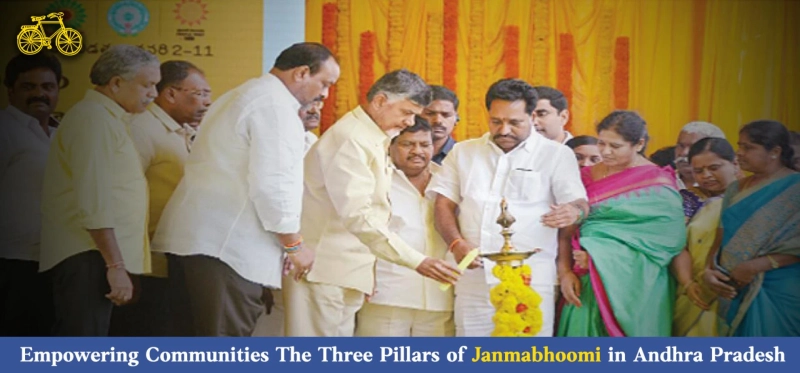Empowering Communities: The Three Pillars of Janmabhoomi in Andhra Pradesh
Janmabhoomi introduced three key objectives, namely 'Prajala Vaddaku Palana' (PVP), 'Shramadanam,' and 'Micro-Level Planning,' which were initiated by N Chandrababu Naidu, the former Chief Minister of Andhra Pradesh. Among these objectives, the first two were already in existence during the Janmabhoomi program on January 1st, 1997, with the addition of 'Micro-Level Planning.' For regional updates go through Political news and TDP news.
The first objective, 'Prajala Vaddaku Palana' (PVP), was launched on October 2nd, 1995, serving as a crucial link between the general public and the state government. PVP facilitated a two-way communication process: state officials and TDP leaders directly engaged with people to understand their problems, while citizens had the opportunity to present their concerns directly to relevant officials. This initiative involved the entire state administration, including ministers, district collectors, revenue officers, and development functionaries, engaging with people in Grama Sabhas to discuss community and individual issues, aiming to find solutions. PVP was implemented three times in 1995 and early 1996 before its inclusion in the Janmabhoomi program, fostering confidence in the bureaucracy and government through village visits.
The second aspect of Janmabhoomi, 'Shramadanam,' which was considered a logical extension of 'Prajala Vaddaku Palana (PVP),' was inaugurated on January 1st, 1996. During the PVP rounds, people showed significant interest in participating by contributing labor and donations for various projects identified by TDP leaders. 'Shramadanam' became one of TDP's significant contributions and TDP’s achievements, with people spontaneously engaging in activities such as school building repairs, road maintenance, canal construction, and more. This program conducted two rounds in January and July of 1996 before becoming part of the Janmabhoomi program. The third objective, 'Micro-Level Planning,' was included in the inaugural phase of Janmabhoomi on January 1st, 1997. This program aimed to empower people to identify and prioritize their problems through Gram Sabhas. Building on the principles of PVP and Shramadanam, it focused on ranking problems based on their significance and potential benefits, considering local resources, including manpower and materials.
The Andhra Pradesh Government released a booklet during the Janmabhoomi inauguration, highlighting the constitutional efforts related to Micro-Level Planning. The booklet emphasized the importance of Micro-Level Planning strategies in strengthening indigenous bodies through the 73rd and 74th Amendments.



